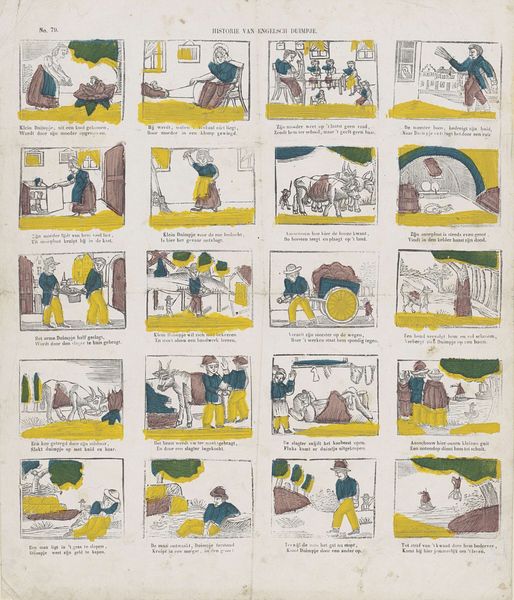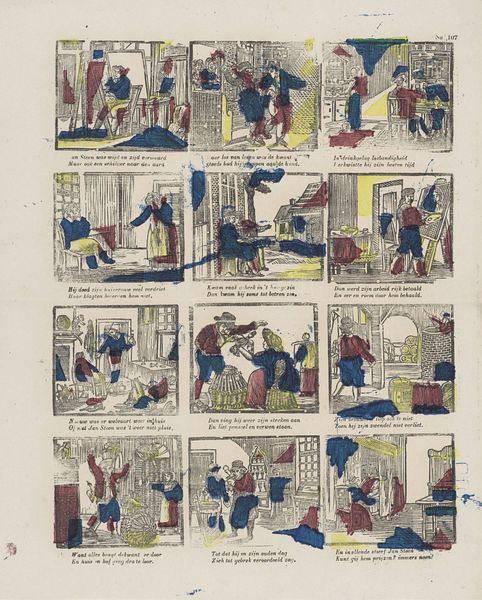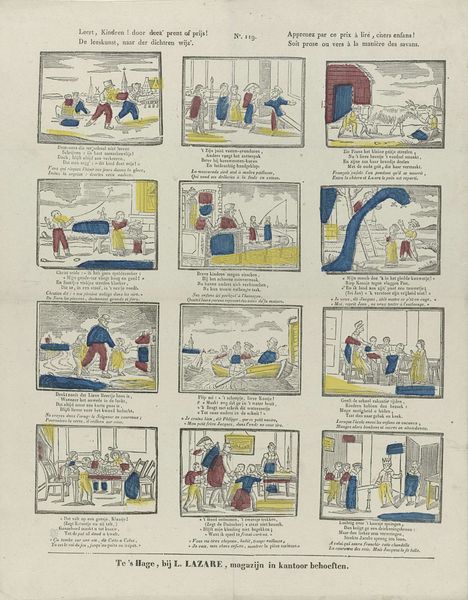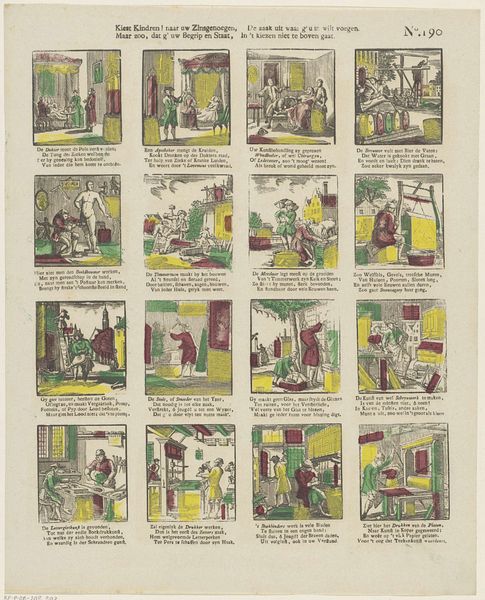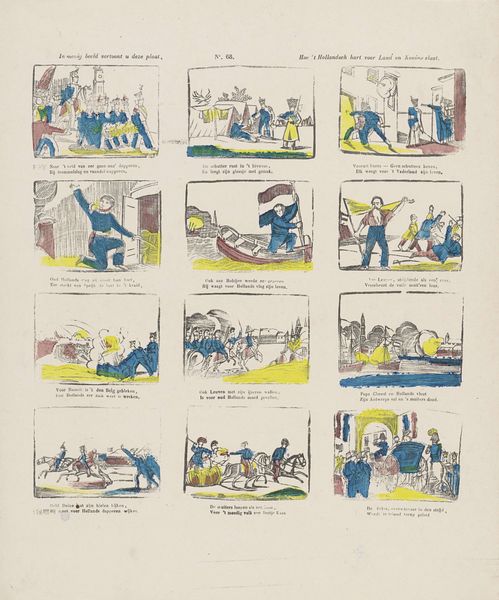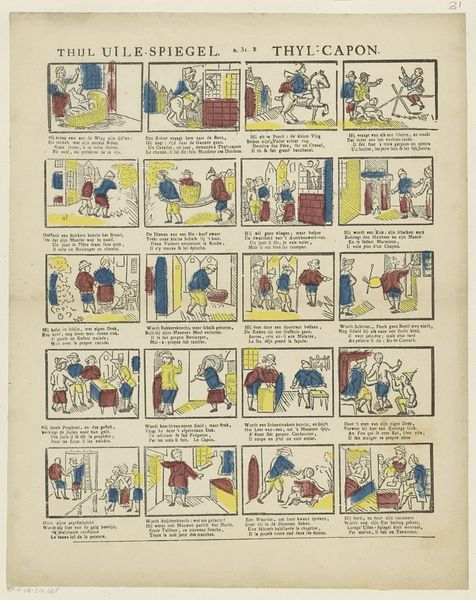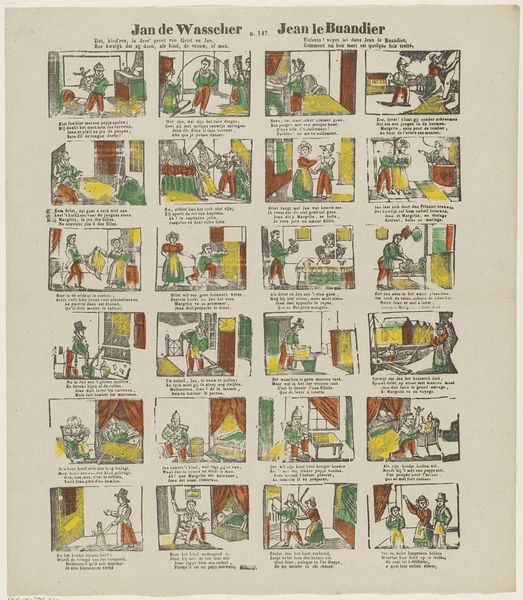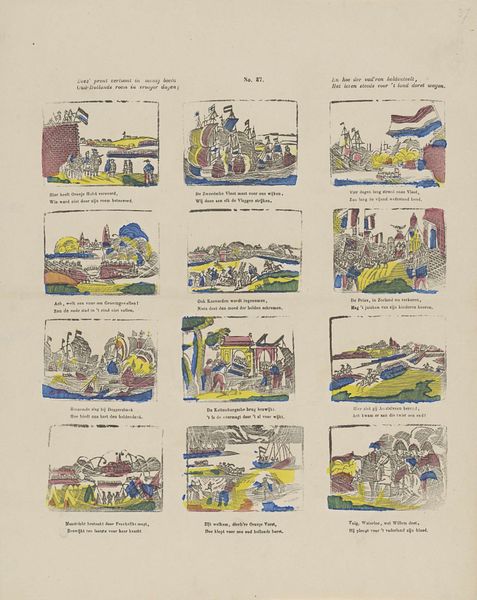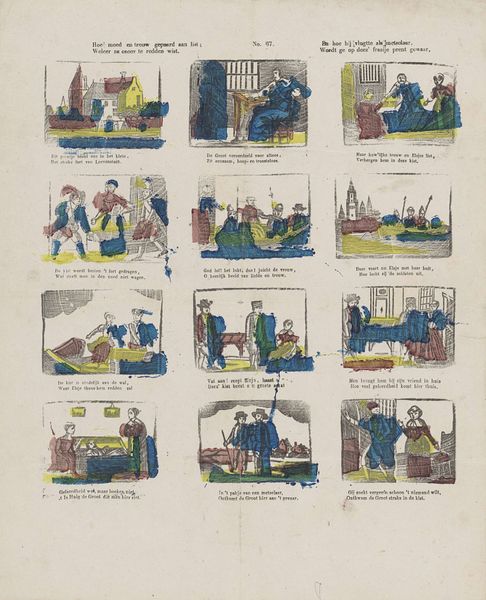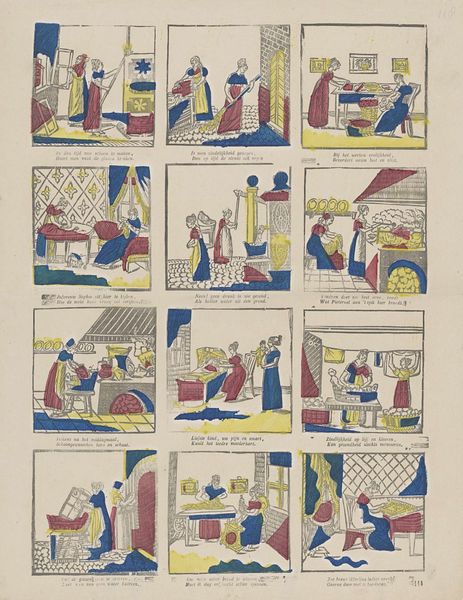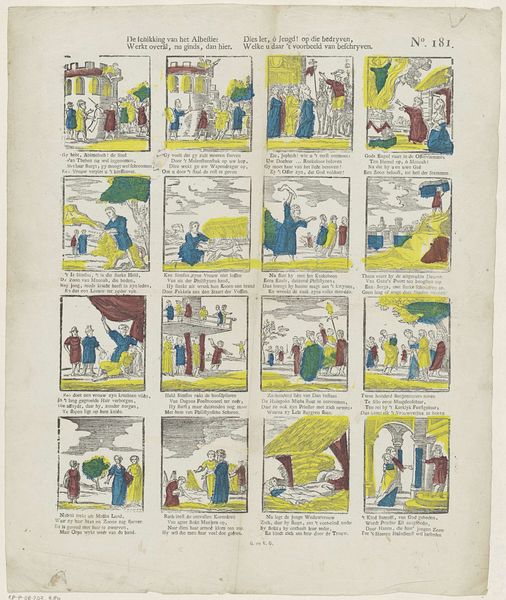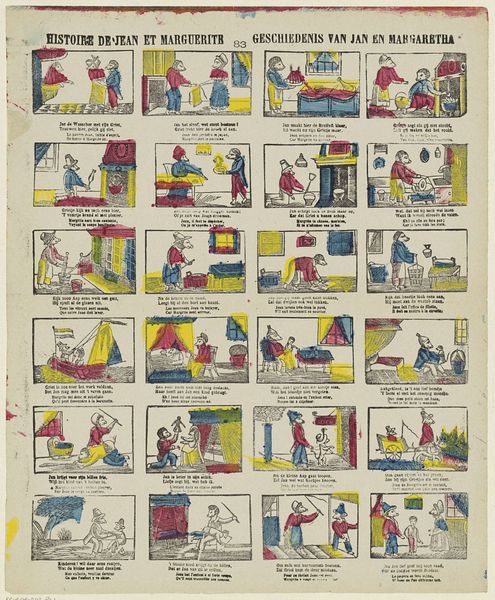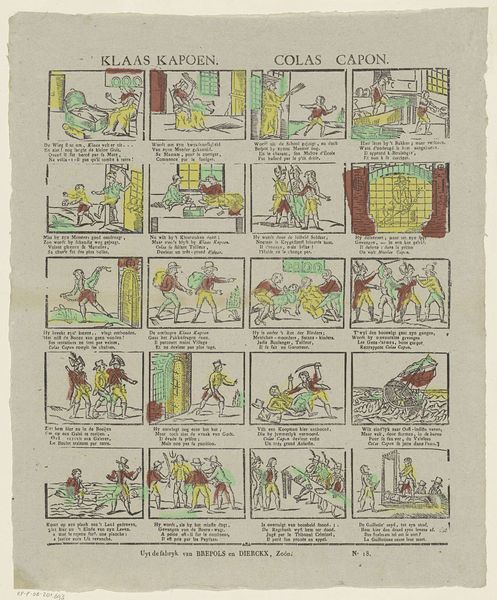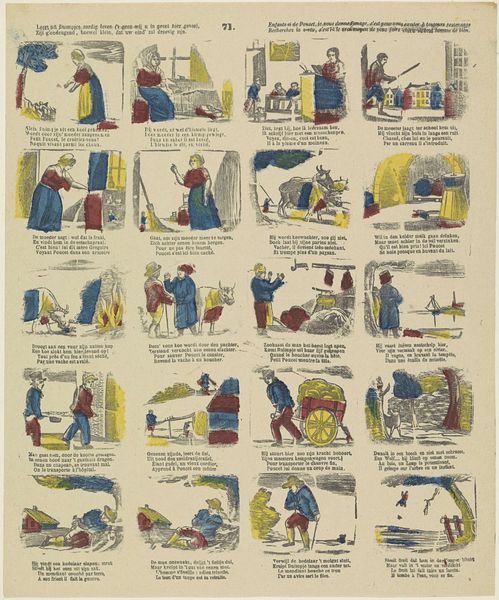
Komt kind'ren gaat ge meê, mijn buitenplaats eens zien, / Ik zal zooveel ik kan, genoegens u daar biên / Er is daar veel te zien in allerhande zaken, / Kom jongens kom ga meê ge zult u wel vermaken 1827 - 1894
0:00
0:00
print, engraving
#
16_19th-century
#
narrative-art
# print
#
folk-art
#
genre-painting
#
engraving
Dimensions: height 389 mm, width 322 mm
Copyright: Rijks Museum: Open Domain
Curator: This intriguing 19th-century print, currently held in the Rijksmuseum's collection, goes by the rather lengthy title: "Komt kind'ren gaat ge mee, mijn buitenplaats eens zien, / Ik zal zooveel ik kan, genoegens u daar biên / Er is daar veel te zien in allerhande zaken, / Kom jongens kom ga mee ge zult u wel vermaken." It's an engraving created by A. Robyn between 1827 and 1894. Editor: Immediately, the layout strikes me. It’s like a storyboard, almost cartoonish, with these little vignettes contained in a larger sheet. The color is delicate, like faded memories or old book illustrations I encountered as a child. Curator: It presents us with a clear narrative. These panels depict various scenes that create, together, the notion of leisurely outdoor excursions or experiences enjoyed during the era. The choice to represent this idea in print connects directly to folk-art practices designed for wide distribution to promote ideals around cultural betterment and enjoyment of nature and the arts. Editor: It almost looks like an early form of propaganda in favor of some form of social norm. The architectural imagery combined with people signals the rise of a bourgeoisie embracing a certain cultured ideal perhaps? A prescribed way of living… of “how things ought to be”. Curator: Perhaps. I look instead at the symbolic role the architectural backdrops fulfill. These buildings, gateways, gardens... each is a symbol of transition, passage from one state to another. Maybe Robyn is suggesting how exposure to art and "the outside" is itself transformative, opening up mental pathways for children. Consider those pastel colors. They’re not merely decorative. Editor: You interpret this color scheme to signal 'pathways'. For me the visual flatness created by such color suggests the opposite: these social pathways are flattened or simplified to promote homogenous ways of being in the world. But looking closely at those children… are they merely learning to enjoy such outings, or learning the role they are to play in wider society? Curator: See? That's the delightful tension inherent in iconography. Multiple meanings, swirling together, informing and commenting on social conventions. Robyn provides a snapshot into both the aspiration and subtle control operating within this period. It reminds me we still struggle with such pressures today, albeit expressed through very different symbols. Editor: And looking at this from a historical vantage point I notice the means by which "acceptable culture" was communicated and reproduced across demographics, perhaps with limiting intention. A vital piece, encouraging us to challenge what those intentions mean now, what ideals remain in operation.
Comments
No comments
Be the first to comment and join the conversation on the ultimate creative platform.
